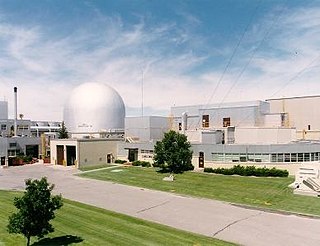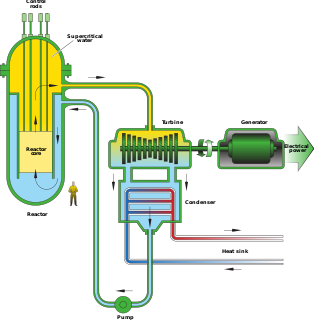See also
- Longwave (disambiguation), longwave radiation
LWR is the light water reactor, a reactor used to generate nuclear power.
LWR may also refer to:
Cardiopulmonary resuscitation (CPR) is an emergency procedure to assist someone who has suffered cardiac arrest.
Enriched uranium is a type of uranium in which the percent composition of uranium-235 has been increased through the process of isotope separation. Naturally occurring uranium is composed of three major isotopes: uranium-238, uranium-235, and uranium-234. 235U is the only nuclide existing in nature that is fissile with thermal neutrons.
Pool may refer to:
Linc, The Linc or LINC may refer to:
LCS may refer to:
Stamford may refer to:

The Nyongbyon Nuclear Scientific Research Center is North Korea's major nuclear facility, operating its first nuclear reactors. It is located in Nyongbyon County in North Pyongan Province, about 100 km north of Pyongyang. The center produced the fissile material for North Korea's six nuclear weapon tests from 2006 to 2017, and since 2009 is developing indigenous light water reactor nuclear power station technology.
SMR may refer to:

The Lincolnshire Wolds Railway (LWR) is a heritage railway based at Ludborough station, near Louth, Lincolnshire, England and the only standard gauge steam railway in Lincolnshire open to the public. The line is part of the original Great Northern Railway (GNR), a rail system that opened in 1848 and once linked Grimsby, Louth and East Lincolnshire with London. In early 2002, 2009 and 2013 the Lincolnshire Wolds Railway received a top national award from the Heritage Railway Association for its heritage railway efforts.

The light-water reactor (LWR) is a type of thermal-neutron reactor that uses normal water, as opposed to heavy water, as both its coolant and neutron moderator – furthermore a solid form of fissile elements is used as fuel. Thermal-neutron reactors are the most common type of nuclear reactor, and light-water reactors are the most common type of thermal-neutron reactor.

The integral fast reactor is a design for a nuclear reactor using fast neutrons and no neutron moderator. IFR would breed more fuel and is distinguished by a nuclear fuel cycle that uses reprocessing via electrorefining at the reactor site.

The supercritical water reactor (SCWR) is a concept Generation IV reactor, mostly designed as light water reactor (LWR) that operates at supercritical pressure. The term critical in this context refers to the critical point of water, and must not be confused with the concept of criticality of the nuclear reactor.

Generation IV reactors are a set of nuclear reactor designs currently being researched for commercial applications by the Generation IV International Forum. They are motivated by a variety of goals including improved safety, sustainability, efficiency, and cost.

North Korea (DPRK) has been active in developing nuclear technology since the 1950s.
DVL could refer to:
ATL may refer to:

Louth railway station was a station in Louth, Lincolnshire, England. It served as a junction for several different now closed lines which converged on the town.
Hybrid nuclear fusion–fission is a proposed means of generating power by use of a combination of nuclear fusion and fission processes.

The Light Water Reactor Sustainability Program is a U.S. government research and development program. It is directed by the United States Department of Energy and is aimed at performing research and compiling data necessary to qualify for licenses to extend the life of America's current 104 electricity generating nuclear power plants beyond 60 years of life. Practically all of the commercial electric-generating nuclear power plants currently in the United States are light water reactor (LWR) plants, meaning they use ordinary (light) water as a moderator and coolant simultaneously.
A pressurized heavy-water reactor (PHWR) is a nuclear reactor that uses heavy water (deuterium oxide D2O) as its coolant and neutron moderator. PHWRs frequently use natural uranium as fuel, but sometimes also use very low enriched uranium. The heavy water coolant is kept under pressure to avoid boiling, allowing it to reach higher temperature (mostly) without forming steam bubbles, exactly as for pressurized water reactor. While heavy water is very expensive to isolate from ordinary water (often referred to as light water in contrast to heavy water), its low absorption of neutrons greatly increases the neutron economy of the reactor, avoiding the need for enriched fuel. The high cost of the heavy water is offset by the lowered cost of using natural uranium and/or alternative fuel cycles. As of the beginning of 2001, 31 PHWRs were in operation, having a total capacity of 16.5 GW(e), representing roughly 7.76% by number and 4.7% by generating capacity of all current operating reactors.